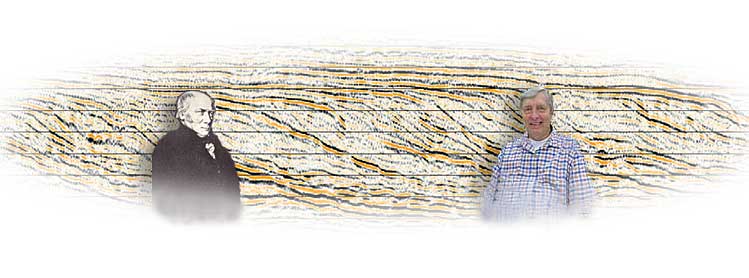
While it is true that mankind's earlier written records contain only small fragments of information detailing how geological interpretation of the origins of sedimentary rocks has evolved, we can reasonably assume that all early civilizations that quarried stone for building would have had artisans who recognized and utilized the common horizontal continuity of sedimentary rocks and their predictable succession of accumulation. Similarly early miners identified mineralogical segregation and used this to extract metals and ornamental gems. Improvement in the skills associated with this geological interpretation would have, in large part, been driven by man's development of tools and the parallel exploitation of the resources of the Earth's crust. As civilizations developed, so miners, quarrymen and road builders conceived heuristic rules of thumb to predict the character of the rocks away from the areas that they were directly working on. These rules were then translated into logical models that explained these early geological observations. We certainly know that prior to William "Strata" Smith's use of lithology, fossils, and unconformities to map rocks in the late 1700's, various prominent philosophers, naturalists and writers had recognized that the Earth sedimentary history contained strata that behaved in a predicable way and contained evidence of marine deposition and waterborne transportation.
Early Greeks, who included Aristotle, Herodotus and Strabo, recognized coastal erosion and progradation, the role of earthquakes in the uplift and down warping of the Earth's crust, and the extrusion of molten rock from volcanoes. Others recognized marine fossils in the rock record and believed sea level had changed during the Earth's history (Fenton and Fenton, 1952, Schoch 1989). Despite these encouraging beginnings in Western Europe, sedimentary Stratigraphy and bio-Stratigraphy was undoubtedly stifled, as it is by some today, by the belief that the fossil record was related to deposition from the biblical flood. Nevertheless, logical explanations for the occurrence of igneous and sedimentary rocks continued despite opposition from religious authorities. For instance in around 1500 Leonardo de Vinci recognized marine fossils in Italian mountains, and in about 1670 Robert Hooke wrote that he thought that fossils were the remains of ancient organisms and might be used to compare rocks of similar age (Dott and Batton 1976). Coincidently, in the late 1600's, Steno (Fenton and Fenton, 1952, Schoch 1989) working in Tuscany identified how some sedimentary rocks were deposited in marine settings, initially with no life but then with the occurrence of organic accumulations. More importantly, he formulated three principles (Dott and Batton 1976) that are widely used today to make stratigraphic interpretations. These are:
1) The principle of superposition - in any succession of strata not severely deformed, the oldest Stratum lies at the bottom, successively younger ones above. This is the basis of the establishment of the relative ages of all strata and their contained fossils.
2) The principle of original horizontality - because sedimentary particles settle from fluids and experience the influence of gravity, stratification was originally horizontal and when steeply inclined must have suffered subsequent disturbance;
3) The principle of original lateral continuity - strata originally extended in all directions until they thinned to zero or terminated against the edges of their original Basin of deposition.
Jean Etienne Guettard in the 1750s also recognized the continuity of the sedimentary rocks and in the Paris Basin, mapping a distribution that matches satellite images of today. Guettard went on to recognize the fossil content of these rocks and compared them to modern marine sediments. He was able to identify the volcanic origin of the cones of "Puy de Domes". Following him Nicolas Demarest went on to establish the relationship between these volcanic cones and columnar basalts (Fenton and Fenton, 1952, Dott and Batton 1976). Lehman in the 1750's recognized the geological succession of the Harz Mountains (Schoch 1989, cited Conkin and Conkin, 1984). In the early 1800s Cuvier and Brongniart further mapped the Paris Basin and identified a succession of alternating marine and freshwater assemblages of fossils and even recognized a DisConformity (Dott and Batton 1976, Schoch 1989, the later citing Conkin and Conkin, 1984). Despite these reasoned and logical advances in geological understanding in the late 1700's to early 1800's, Abraham Gottlob Werner, a German inspector of mines and teacher of mining and mineralogy took on a different direction. He had a profound but often negative influence on the geological sciences in Western Europe with his misconceived "Neptunist" theories that granites and basalts had marine origins. This was despite clear evidence to the contrary that had been seen in the vicinity of Vesuvius in Italy and Puy de Domes in France (Fenton and Fenton, 1952).